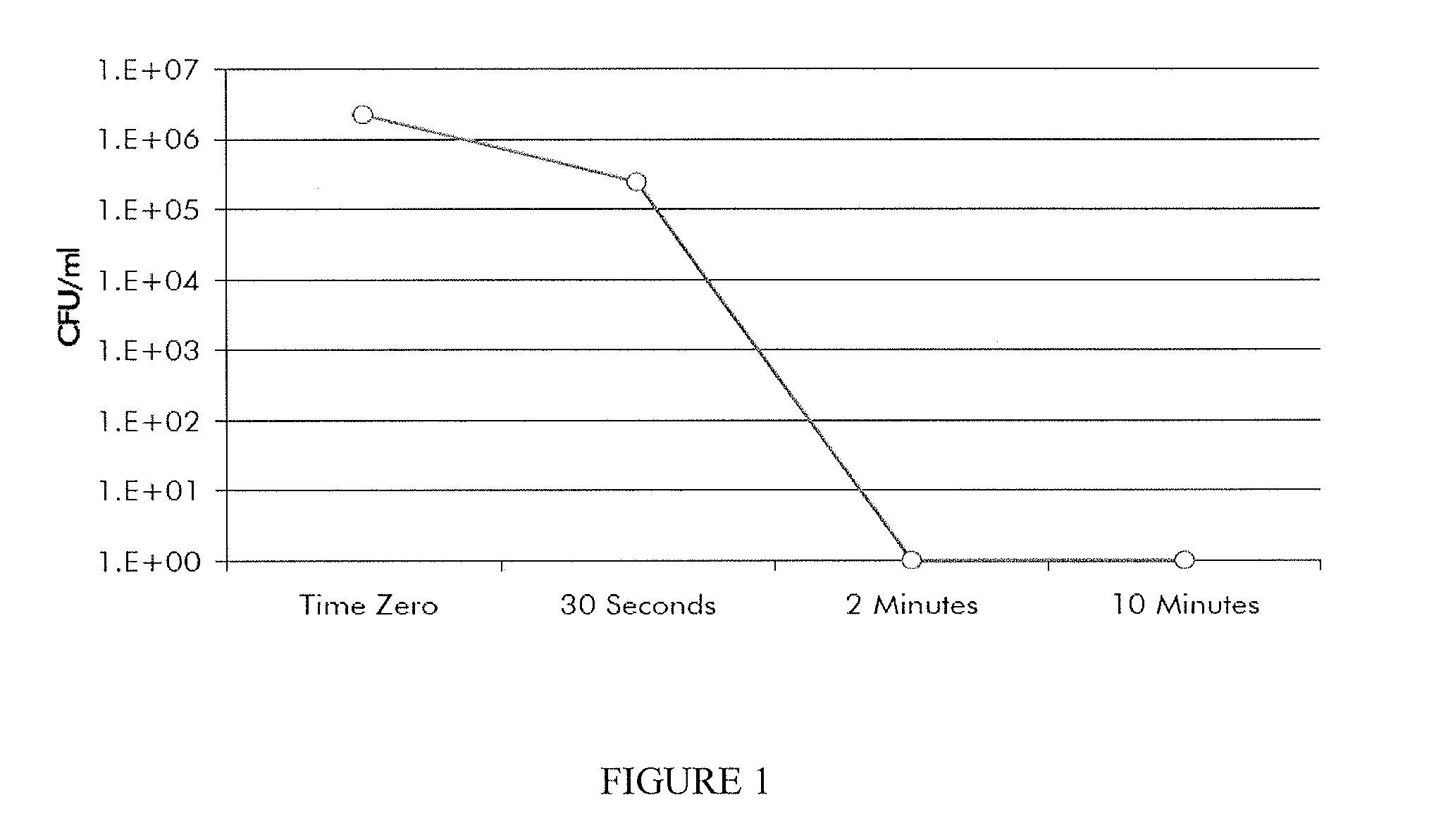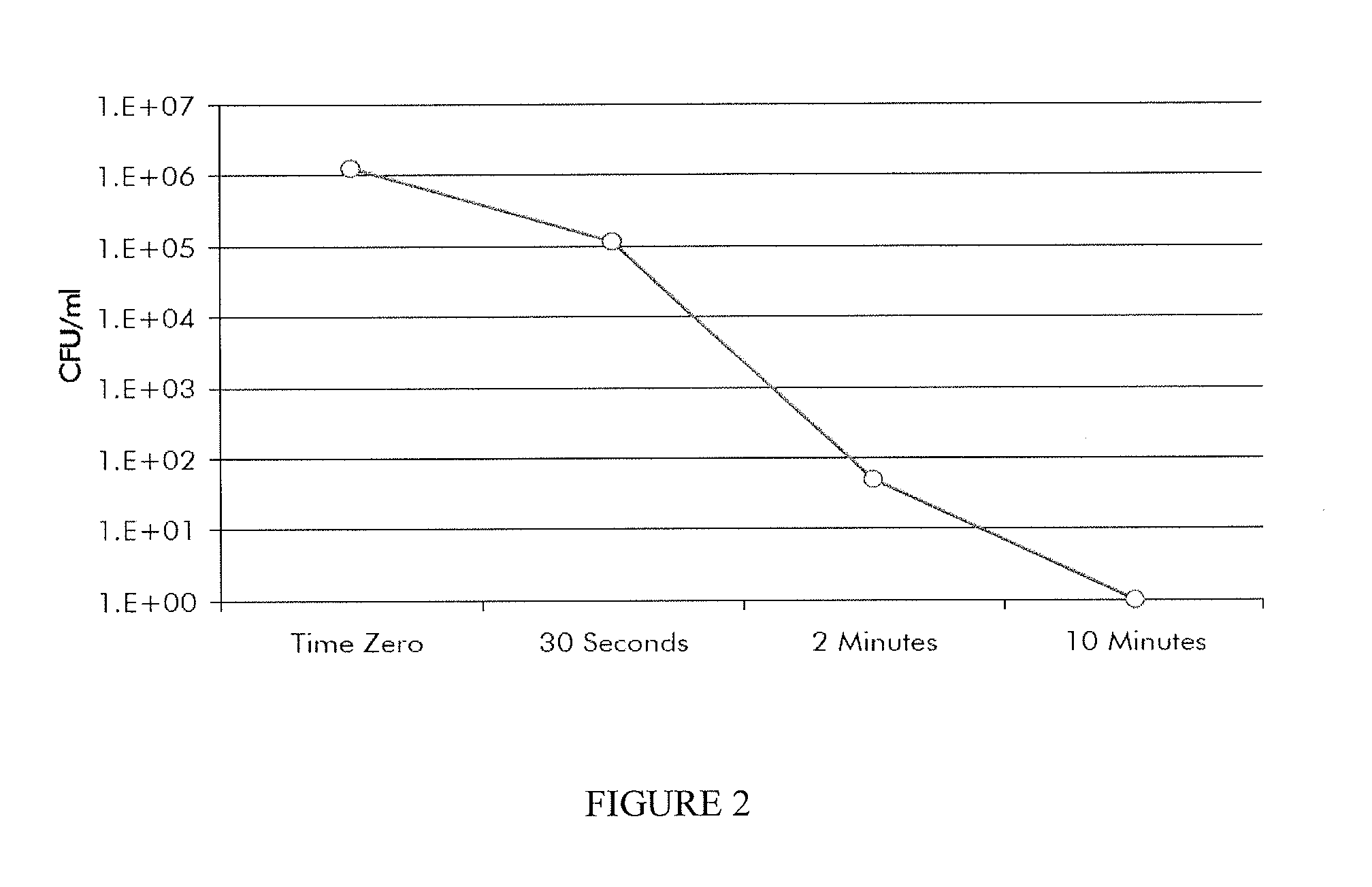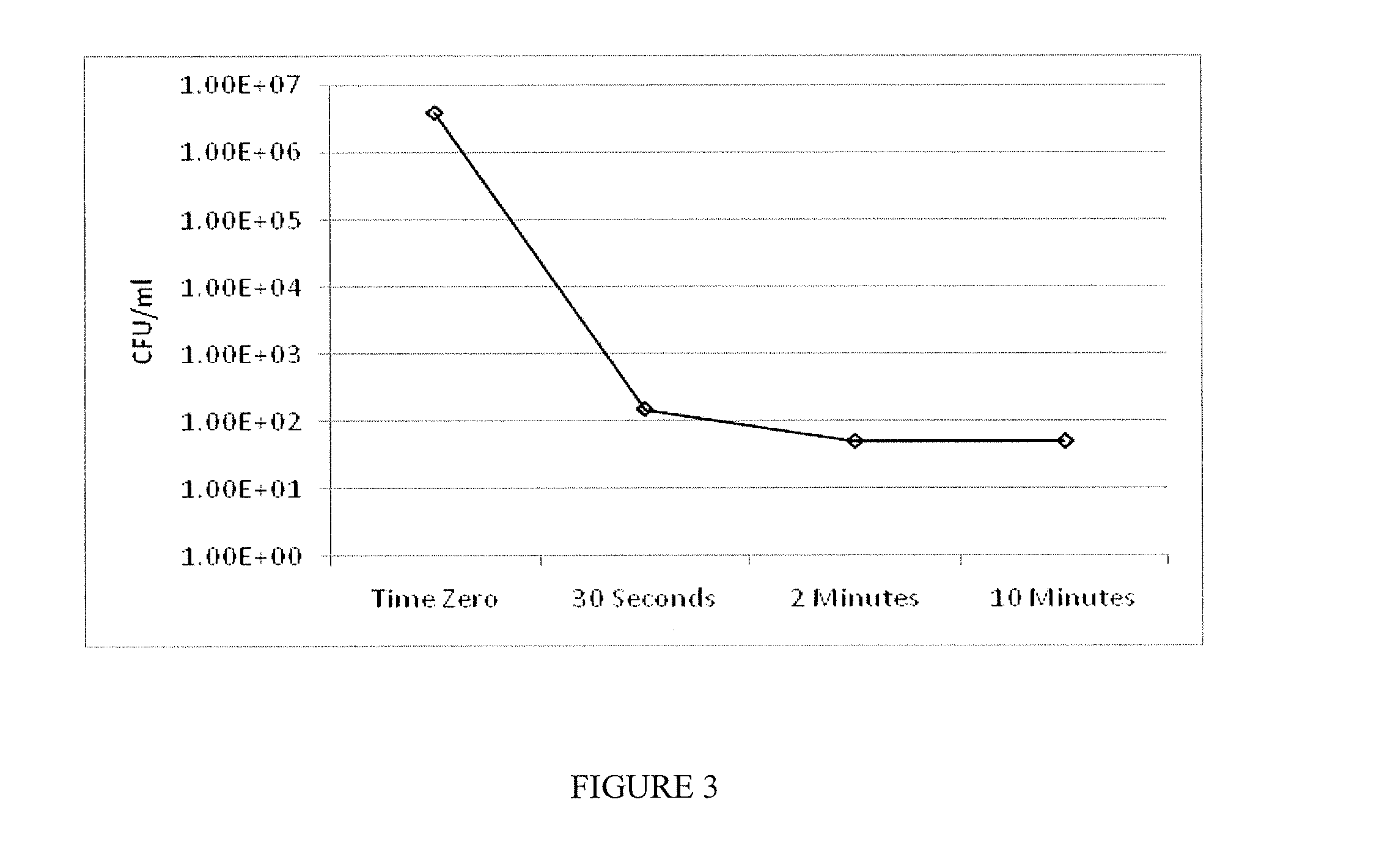Antimicrobial surface treatment
a technology of antimicrobial surface and treatment, applied in the direction of biocide, detergent compounding agent, paint, etc., can solve the problems of financial loss, adverse health effects, damage to customer confidence, etc., and achieve the effect of viability or population of a microorganism, reducing or eliminating the population, and reducing the growth rate of a microorganism
- Summary
- Abstract
- Description
- Claims
- Application Information
AI Technical Summary
Benefits of technology
Problems solved by technology
Method used
Image
Examples
example 1
[0028]This example illustrates use of a surface treatment powder in accordance with the invention.
[0029]A surface treatment powder was prepared by combining the components identified in Table 1:
TABLE 1MaterialAmount (wt. %)Sodium Percarbonate88.5Sodium Carbonate10Sodium Dichloroisocyanurate1Non-ionic Surfactant (alcohol0.4ethoxylateTetra Acetyl Ethylene Diamine0.1
[0030]To test the antimicrobial properties of the composition, the surface treatment powder was combined with water at a ratio of 1 g surface treatment powder to 29 ml of deionized water, and the resulting solution was used in a suspension time-kill study of E. coli, L. monocytogenes, and S. enterica bacteria. E. coli 11229, L. monocytogenes 15313, and S. enterica 10708 were separately grown in Tryptic Soy Broth for 24±6 hours, plated to Tryptic Soy Agar, and incubated at 36.0±1° C. for 24±6 hours. A small aliquot of each culture was placed in a reaction test vessel along with an aliquot of the surface treatment powder dilu...
PUM
| Property | Measurement | Unit |
|---|---|---|
| Volume | aaaaa | aaaaa |
| Volume | aaaaa | aaaaa |
| Fraction | aaaaa | aaaaa |
Abstract
Description
Claims
Application Information
 Login to View More
Login to View More - R&D
- Intellectual Property
- Life Sciences
- Materials
- Tech Scout
- Unparalleled Data Quality
- Higher Quality Content
- 60% Fewer Hallucinations
Browse by: Latest US Patents, China's latest patents, Technical Efficacy Thesaurus, Application Domain, Technology Topic, Popular Technical Reports.
© 2025 PatSnap. All rights reserved.Legal|Privacy policy|Modern Slavery Act Transparency Statement|Sitemap|About US| Contact US: help@patsnap.com



